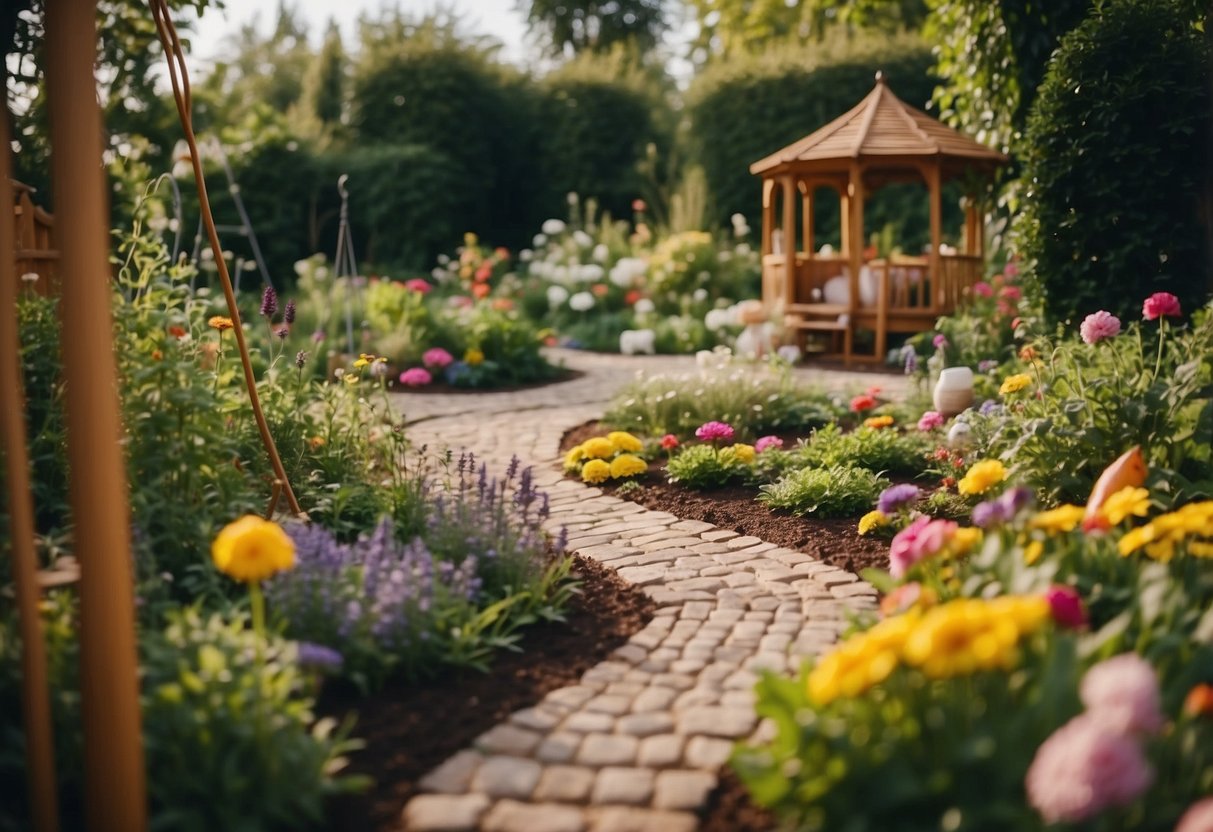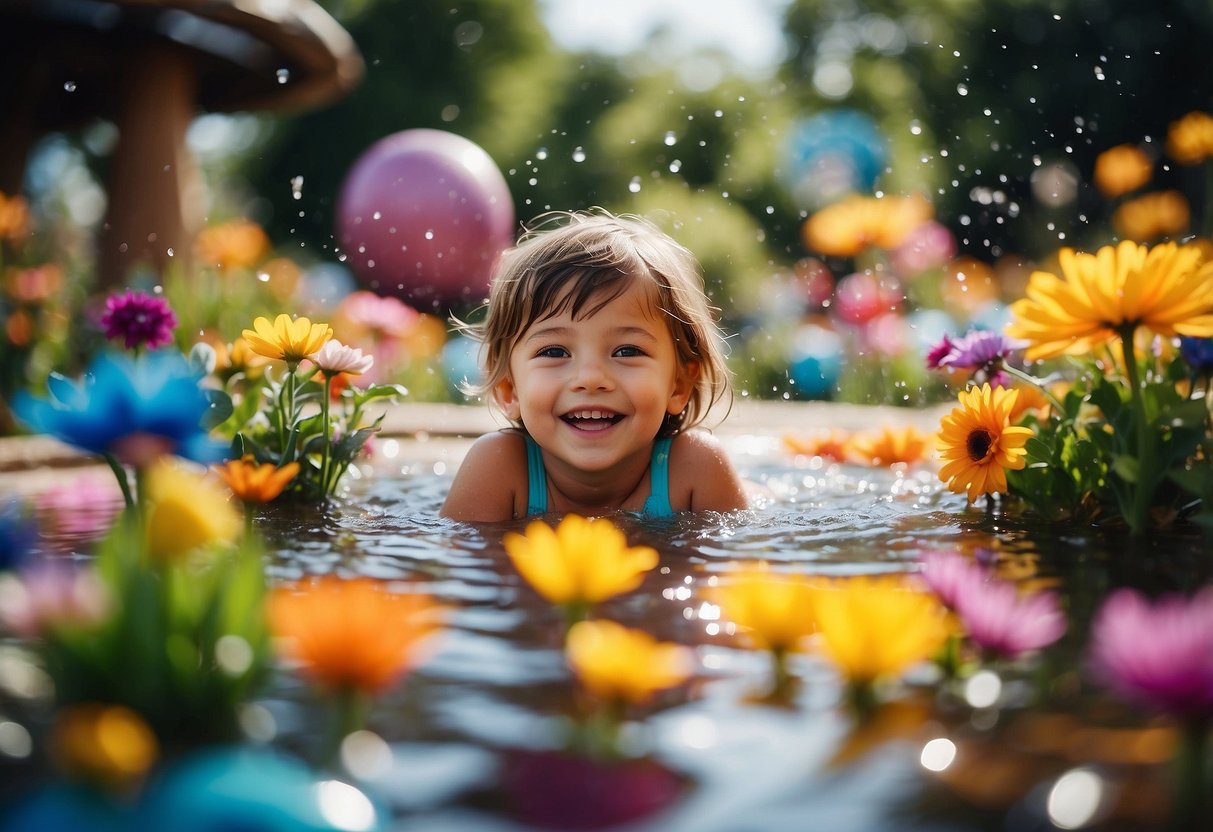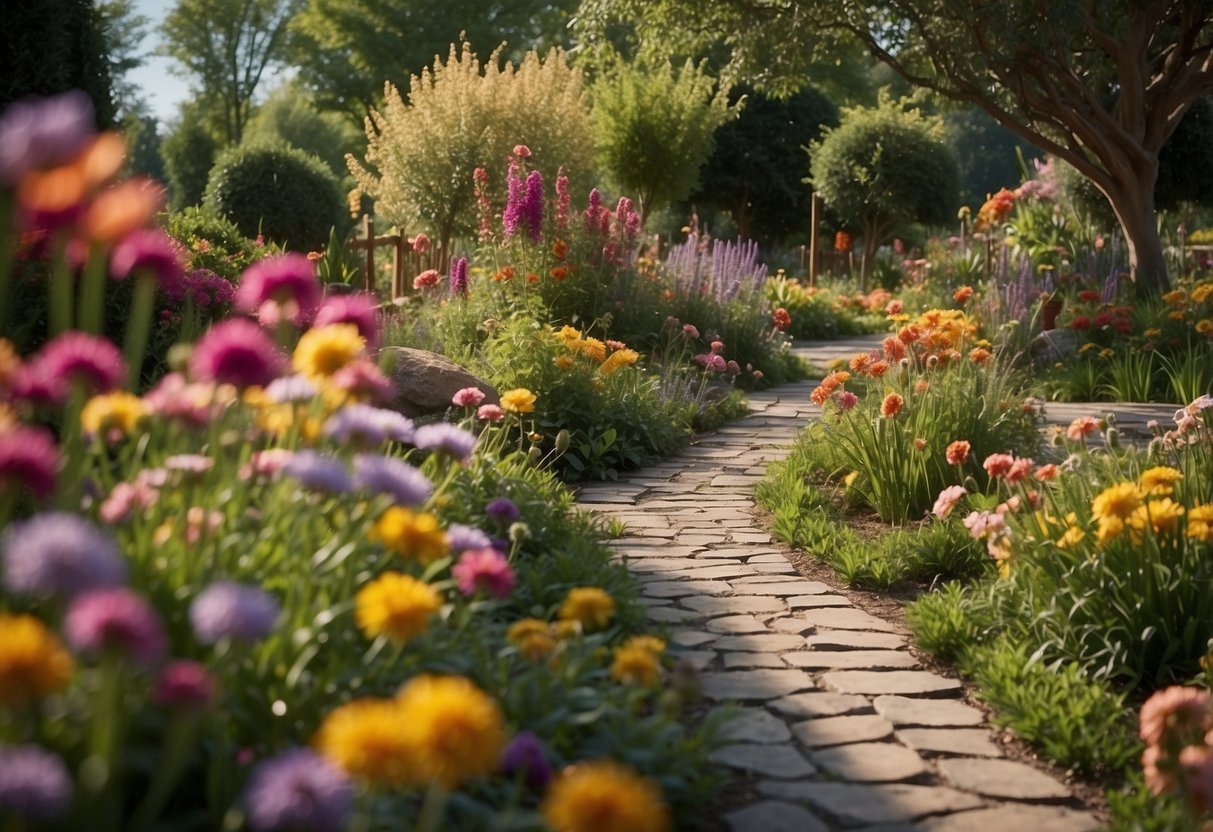Childrens Garden Ideas: Fun and Creative Outdoor Projects for Kids
Creating a garden for children can be a wonderful way to introduce them to the joys of nature. Gardens offer kids a place to explore, learn, and play. Whether you have a large backyard or a small balcony, there are countless ways to make the space engaging for young gardeners.

What are some fun and educational ideas you can use for a children’s garden? From digging in the dirt to watching their plants grow, kids can develop valuable skills and a love for the outdoors. This article will provide various suggestions to help you design a garden that not only captures their imagination but also encourages hands-on activities.
1) Fairy Garden

Creating a fairy garden is a fun way to spark your child’s imagination.
Try using a small flower pot for a mini fairy garden that can fit anywhere. Add some moss, pebbles, and tiny accessories like a fairy house or a little bench.
Use kid-friendly flowers like marigolds and petunias for an enchanting look. See more ideas here.
2) Butterfly Haven

Creating a butterfly haven is a great way to bring color and life to your garden. Start with a simple bowl feeder. Use a shallow bowl and decorate it with bright beads to attract butterflies.
Plant flowers that bloom at different times of the year. This ensures that butterflies always have a food source.
Add a butterfly feeder filled with rotting fruit. Butterflies love it, but be aware it might attract other insects too.
Include host plants for butterfly larvae. This helps butterflies lay their eggs. Your garden will be buzzing with life and beauty! For more detailed guides, you can check DIY Butterfly Feeders.
3) Vegetable Patch

Creating a vegetable patch with your kids can be a fun and educational activity. Start by choosing easy-to-grow veggies like radishes, cherry tomatoes, and carrots.
Use checkered paper to map out where each vegetable will grow. Kids can color the map, making the planning process more engaging.
Mix compost into the soil to provide essential nutrients. Let your children get their hands dirty by helping turn the soil and plant the seeds.
Growing vegetables together can teach responsibility and patience. Watching the plants grow will excite and motivate your kids to eat the veggies they’ve grown.
For more tips, visit Fun Gardening for Kids or Nature & Garden.
4) Water Play Area

A water play area can be a perfect addition to your children’s garden. Install a splash pad that has nozzles spraying water from below. It’s great fun and helps kids cool off on hot days.
Adding a water table allows children to pour and splash water, refining their motor skills while they play.
5) Sensory Pathway

Creating a sensory pathway in your garden can be a delightful experience for children. You can use materials like wood chips, gravel, or sand to create different textures underfoot.
Include elements like wind chimes or a solar-powered water fountain for soothing sounds. Try adding colorful plants and fragrant herbs like lavender or mint to engage multiple senses.
As you walk through the garden with your kids, encourage them to touch, smell, and listen to everything around them. This makes the garden a fun place to explore and learn.
6) Miniature Treehouse

Building a miniature treehouse in your garden can be loads of fun. You’ll need a sturdy tree as the foundation. Trees like oak, beech, or Douglas-fir work well. A small plastic container can serve as the base, filled with mud and decorated with grass and flowers.
For more ideas, you can check out these DIY miniature treehouse ideas or explore 27 awesome treehouse ideas. This project is great for kids and can be a delightful way to spend a weekend together.
7) Garden Labyrinth

A garden labyrinth can be a magical place for children. It’s like a maze, but with one twisting path that leads to the center. This creates a sense of adventure while also providing a peaceful spot to play.
You can create a labyrinth using different materials. Consider using pavers and turf for a durable setup that blends with your garden.
Add fun elements like hidden treasures or sculptures for extra excitement. This can turn the labyrinth into a playful area kids will love to explore.
8) Painted Rock Markers

Painted rock markers are a fun and easy project for kids to take on in the garden. Start by finding smooth, flat rocks. Clean them well to remove dirt and dust.
Use non-toxic acrylic paints to decorate the rocks. Let your kids paint the names of plants, colorful designs, or pictures of veggies.
Once done, place them next to the corresponding plants. These markers help identify plants and add a splash of color to your garden. For more ideas, check out DIY Painted Rocks for Garden Markers.
9) Sunflower House

A sunflower house is a fantastic way to engage your kids in gardening. Start by marking the perimeter of your “house” with flour on the ground.
Plant seeds like Giant Gray Stripe and Russian Mammoth, which can grow up to 12 feet tall, ensuring sturdy “walls”.
Water the seeds daily and watch as your sunflower house takes shape. The tall sunflowers will create a magical play area for your children to enjoy.
For more details on building a sunflower house, visit KidsGardening.
10) Bug Hotel

Building a bug hotel is a fun and educational activity for kids. It helps attract beneficial insects like bees and ladybugs to your garden.
Start with a simple frame made from wood, bricks, or old pallets. Fill it with materials like pinecones, bamboo canes, and dry leaves.
Hang the bug hotel in a tree or place it on the ground to see what creatures move in! For more detailed instructions, visit Simple Bug Hotel for Kids.
Benefits of Children’s Gardens

Children’s gardens offer numerous benefits, such as promoting outdoor play and providing educational opportunities. These advantages help children grow and learn in a fun, engaging way.
Encouraging Outdoor Play
Gardening encourages kids to spend time outside, soaking up fresh air and sunshine. It gives them a task that gets them moving, which is great for their physical health. Activities like digging, planting, and watering plants help improve their motor skills.
Being outdoors also helps reduce stress and anxiety. Children can explore nature, which boosts their mood and mental well-being. Kids enjoy the responsibility of tending to their garden, creating a sense of accomplishment and pride in their work.
Gardens can be beautiful places full of fascinating plants, insects, and animals. This keeps kids interested and eager to spend more time outside. Building something together, like a mini rock garden, can be a great family activity. You can find creative ideas to start with like those suggested here.
Educational Opportunities
Gardening teaches kids about nature and science firsthand. They learn how plants grow, what they need to thrive, and the role of insects and other creatures. This hands-on experience makes learning fun and memorable. Kids also learn about nutrition and healthy eating, especially if they help grow vegetables or fruits. This can encourage them to make better food choices.
Kids’ gardens can include various projects like making a recycled bird feeder or a toad house. These activities inspire creativity and problem-solving skills. Additionally, gardening teaches patience as children wait for plants to grow and see the results of their efforts.
The varied tasks involved in gardening, from planning and measuring to planting and caring, help kids understand responsibility and develop a sense of discipline.
Designing a Child-Friendly Garden

Creating a garden for children involves ensuring safety and incorporating fun, interactive elements that keep them engaged. This guide will help you design a backyard where kids can play, explore, and learn safely.
Safety Considerations
Safety is key when designing a garden for children. Soft surfaces like grass or mulch help cushion falls. Avoid materials like gravel that can cause injuries.
Keep watch for toxic plants. Some plants, like foxglove or oleander, can be harmful if ingested. Stick with child-safe plants like sunflowers or marigolds.
Fencing and boundaries are also important. Make sure the garden is enclosed to keep kids safe from wandering off. Gates should be child-proof.
Provide shade to protect from sunburns. Use trees, awnings, or umbrellas for this. Consider the placement of play areas to avoid excessive sun exposure.
Incorporating Interactive Elements
Add engaging elements to make the garden fun. Tree-stump stepping stones are a great addition, allowing kids to balance and hop from one to another.
A veggie patch can be both fun and educational. Kids enjoy planting seeds, watching them grow, and eventually harvesting their food.
Build a mud kitchen with access to water, pots, and pans. This encourages sensory play and creativity.
Raised beds can help differentiate play areas from planting zones. These could be used for flower patches or sensory plants like lavender and mint. These activities can foster a love of nature and gardening.
Pathways and trails can guide kids through the garden, making exploration exciting. Use stones, wood slices, or even playful themes to mark these paths.
Maintaining a Children’s Garden

Keeping a children’s garden in good shape involves regular seasonal plant care and active involvement of the young gardeners themselves. This makes the garden a fun and educational space for kids.
Seasonal Plant Care
Caring for plants throughout the year requires different approaches. In spring, focus on planting seeds and young plants. This is also a good time to teach kids about watering and fertilizing them. Choose simple-to-grow plants like sunflowers and marigolds.
During summer, make sure the garden receives enough water. Show children how to check soil moisture and explain the importance of watering during cooler parts of the day. Remove weeds regularly to prevent them from stealing nutrients from your plants.
Fall is a great time for harvesting and cleaning up the garden. Help kids pick any ripe produce and teach them how to prepare the garden for winter. This includes removing dead plants and adding compost to enrich the soil. Winter is slower, but it’s important to protect plants from the cold. Covering them and checking for pests can save your plants during this season.
Involvement of Children in Maintenance
Getting children involved in garden maintenance keeps them engaged and learning. Assign simple tasks based on age. Younger children can water plants with small watering cans or pull easier weeds, while older kids can help with planting and pruning.
Set up a weekly garden checklist to keep track of chores. Make tasks fun by turning them into games. For example, the child who finds the most weeds gets a small prize. This makes gardening enjoyable and instills a sense of responsibility.
Encourage children to observe and journal how plants grow. They can draw pictures or write short descriptions. This activity not only reinforces their learning but also enhances their appreciation for nature.







